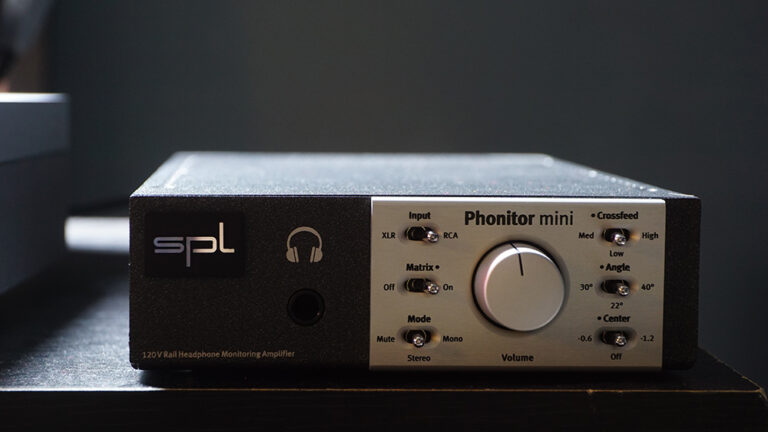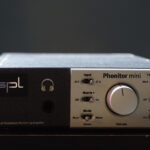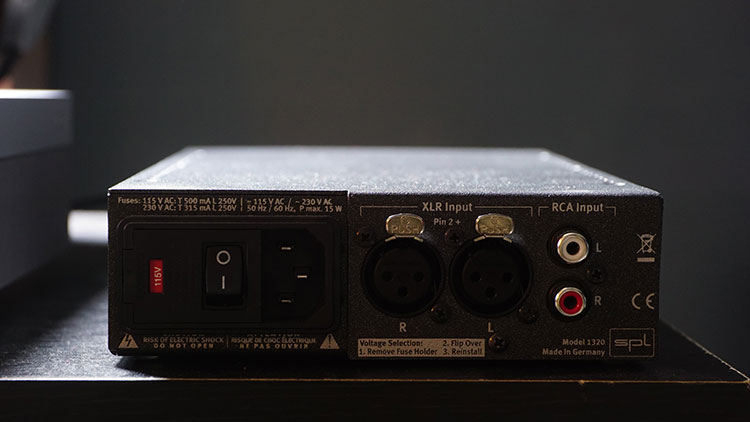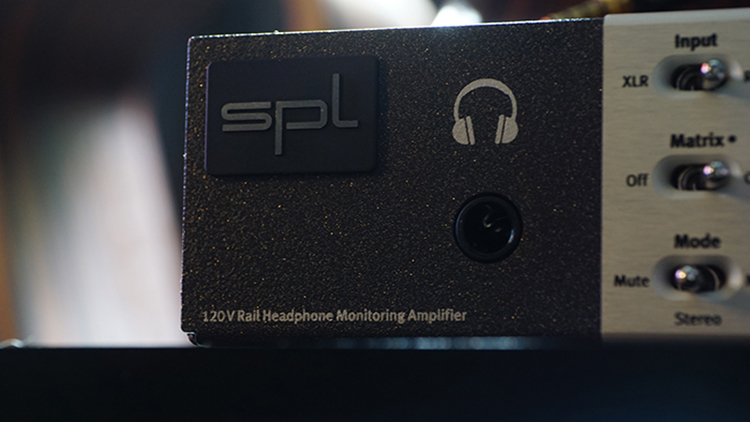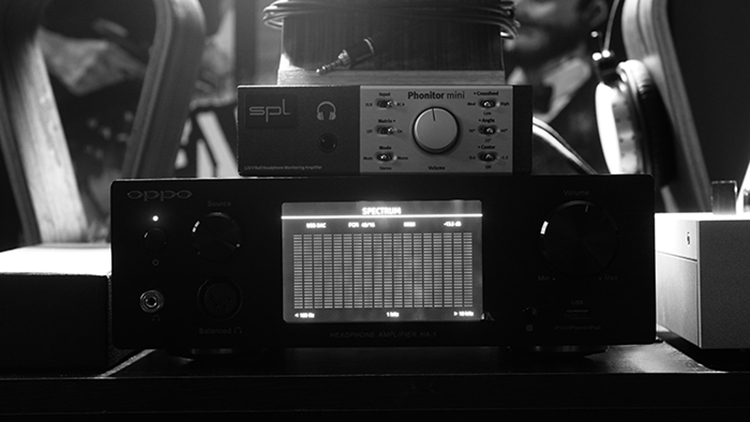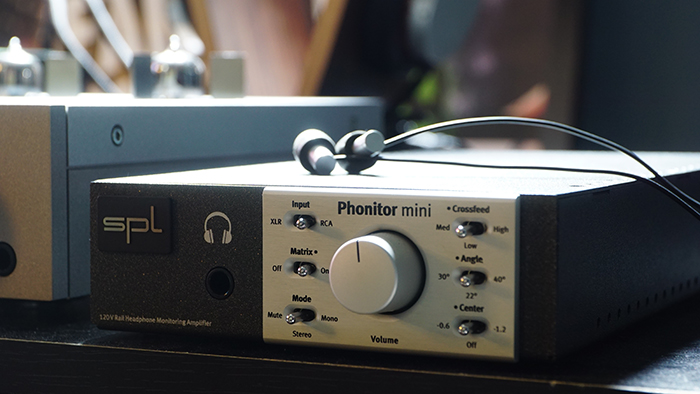Disclaimer: The SPL Phonitor Mini we were sent is a sample in exchange for our honest opinion. We thank SPL for this opportunity.
To learn more about amplifier reviews on Headfonics, you can click here.
SPL Audio products have always been exclusive to me. I never knew anyone who owned a Phonitor, but I sure as hell wanted one despite that.
It came to a bit of a shock to me that the company fashioned a mini version of their full-size Phonitor; something that shares the same traits as its big brother seems very tantalizing to me. A smaller chassis, minus all the perks of the larger unit, as well as a cheaper price?
That sounds darn tasty if you ask me; sign me up! But can SPL stand toe-to-toe with some other sub $1000 or so tier amplifiers out yonder?
The SPL Phonitor Mini
The SPL Phonitor Mini sells for around $849.99, with no USB DAC included. At a hefty 4.5 lbs and around 10 inches x 6 inches x 2 inches, the amp feels rock solid with its aluminum body.
This design kind of reminds me of the old Matrix Mini of years past, a simpler time, a better time. SPL’s Mini came with no interconnects, just as most amplifiers and USB DACs tend to these days.
I can’t stress how much that upsets me. These higher-end products need to start including everything you need; this is 2015 and not the Dark Ages.
Koss included everything you need for your listening needs with their $999 ESP 950 Electrostatic headphones, with cables included.
So, I must start holding everyone to a higher standard and demanding companies include everything we need to start up and enjoy the music as soon as we open the package.
Ins and Outs
This amp only outputs 1/4, single-ended, there are no balanced output options available. At this price point, I simply don’t understand why anyone would think this is going to fly in the current market. It has basic left and right XLR (electronically balanced) and RCA inputs, which is a really odd choice.
Do you really need both if the amp doesn’t offer a balanced output? Gosh, I’d rather just have either or and swap the front space for a single 4-pin balanced XLR output instead.
I realize I may be asking too much here, but it really annoys me to no end to be forced into single-ended.
It seems really needless and super bulky and cumbersome to opt for dual giant XLR left and right cables (instead of nice RCA cables) and then be stuck with a ¼ output.
Maybe I am in the minority here, but having XLRs right next to RCA’s on a single-ended only output amplifier is a bit strange to me.
The front panel of the device offers up some unique Crossfeed and angled speaker effects to the audio experience, via some physical toggle switches: Input Selection (RCA or XLR), Matrix, Mode, Crossfeed, Angle and Center.
Implementation of physical toggles for this seems like a grand idea, at least until you realize that freeware programs for the PC like Foobar2000 offer all of these types of toggles as well.
There really is no upside to using hard toggles on an amp if you are sourcing the Phonitor Mini with a USB DAC, so I’ll never recommend this amp to anyone who doesn’t use a PC/Mac to house their music collection and library.
It seems obvious that this amp was designed for people with vintage setups, maybe those with CD players, Vinyl or tape decks of some type as their source.
If that is the case, then this Mini is a good buy if you find a used one. If not, it really is the most obsolete amplifier I’ve yet come across for anyone interested in digital music output via computers.
Suggestion
Good lord, there is a huge space on the right side (left to anyone looking at it head on) of the front plate for a nice 4 pin balanced XLR, or even a balanced RSA. Something!
The SPL logo isn’t even centered in that area, it hovers in the top right, then there is a logo of a headphone and under that is a ¼ output. This is just wasted space! Can’t we get a Mini 2.0 revision with some extra outputs there instead?
The Toggles
Matrix is a method of trying to recreate a speaker-like working environment.
Mode allows you to Mute the amplifier, as well as select Stereo or Mono output.
Crossfeed
This is a method of allowing some stereo bleed into the opposite side of the setup: some audio is pipped from stereo right in a recording, into the left driver and vice versa. This effect allows for a wider, more complete center image experience and can make the stereo image feel better formed.
SPL designed three presets of the quality of this audio channel bleed into the amplifier: Low, Medium and High. As a fan boy of Crossfeed in general, I must say that even the highest output is weak to my ears and something I am not accustomed to as a Foobar2000 user.
Normally, I listen with a much higher level of Crossfeed when I am not reviewing things and for pure musical enjoyment on a personal level.
That free computer software for music allows me to toggle significantly less or more Crossfeed as I please and normally I run with the Meier Preset for the Foobar2000 Crossfeed DSP.
Here on the Phonitor Mini, the highest gain just can’t compete with the digital versions of these functions inside Foobar2000.
Angle
This attempts to recreate angled speakers are various angles at 30, 22 and 40 degrees. U
sing these can make or break the center image of your audio listening experience, making it sound naturally wider or more intimate and closed in. Combined with Crossfeed, I can hardly hear any differences between any of these three settings.
Center
This is a function that tries to preserve the center of the stereo image, as it naturally degrades with the usage of the Crossfeed and Angle toggles. Using this feature will allow you to boost the centralized area of the sonic void by -0.6dB or -1.2dB.
Sound Impressions
It pains me to say it, but my $1200 Oppo HA-1 really laid a beat down on this SPL Mini. With regard to clarity, this Mini is just not up to par with an amp that generally costs $850 that also doesn’t offer a DAC as well, let alone $1200 with my HA-1.
At $850 and for a 100% raw amplifier, I expect more out of it. When I use the HA-1 to bridge my Phonitor Mini to a headphone like the MrSpeakers Ether, I am met with a downgrade in quality across the board vs just using the HA-1 by itself. Here are some specs:
- 2x 1 W (+30 dBu) at 1 kHz and 600 Ω connected impedance
- 2x 2 W (+30 dBu) at 1 kHz and 300 Ω connected impedance
- Maximum Output Power: 2x 2 W(1kHz/300 Ohm), 2x 1 W (1kHz/600 Ohm)
Clarity
Clarity and solidity provided by higher output amps aside, clarity should not be affected by the lack of wattage output with the Ether: Proven by the usage of sets like the K812 from AKG, Beyerdynamic T1 and even my brand new Noble K10 customs that still sound shoulder shrug worthy when paired with the Phonitor Mini.
Sadly, the amp just isn’t banging out some serious or respectful clarity at this price point either and feels lacking in substance and authority. This amp doesn’t have the juice to justify usage with most Planar headphones that I have available at the moment.
I really wanted the Mini here to offer something nice or perhaps some useful incentive to purchase…but there objectively isn’t one I could spot. With regard to literal clarity, it is inferior to a host of around $800-$1000 amps out there.
Hell, the ess9018 DAC inside my portable Calyx M ($999) sounds noticeably more clean and clear with every headphone I tested with during the review process. Honestly, I wasn’t able to find a $800-900 amplifier that sounded inferior to the Phonitor Mini and I’ve never heard one in the price tier that sounds quite like this.
So please forgive me for the lack of comparison in this price tier…there just aren’t any $800-900ish headphone amps that I’ve come across that sound grainy and harsh like this Phonitor Mini does. I think this amplifier cost near double of what it should and is on the level of the Schiit Lyr at $450.
Staging and Dynamics
For reference, I always use my HA-1 from Oppo. I know it isn’t the best DAC/Amp in the tier, but it is the most useful and jam-packed with features that make life so very easy for a reviewer. It is also a great flat line, benchmarking tool to compare other products against.
When I compared it with the SPL Phonitor Mini by connecting the two together, you can hear an audible downgrade in clarity and dynamics (yes, dynamics are downgraded despite the host of Crossfeed and Angle toggles used on the Phonitor Mini).
I am truly shocked by this, I didn’t expect the 9018 DAC in the HA-1 on a neutral EQ via Foobar to house superior depth of field (again, to a noticeable degree) over the Phonitor Mini.
Where the Oppo is smooth and deeper feeling in staging, the Phonitor has some haze over the entire spectrum, top to bottom and feels flatter, lacking dynamics and with less stereo separation of instruments. The Mini is also much more impactful with slam, wince-worthy at times.
This is not a relaxing amplifier, quite the opposite and it feels raw and abrasive at times. There is no doubt the HA-1 is superior in staging qualities in every way, as well as being the more slick and smooth of the two.
Bass
With Crossfeed active, Bass quality drops. This occurs even with Foobar’s digital Crossfeed circuits, so it is no surprise that it happens through the Phonitor by itself as well.
Since there are no bass booster toggles on the amplifier, the use of the Crossfeed and Angle switches really degrade quantity too much for my ears on a neutral EQ.
I’ve messed with the circuits and tried every combination I could in an attempt to salvage bass quantity, but to no avail.
This is a linear sounding amp to begin with without any toggles active that alter sound, so of course, it loses oomph on the low end with some of them active. You’ll need to run EQ via your source to counter it; it’s the only way to win.
Vinyl users may be S.O.L. here, but those with CD players with some bass dials or those using a portable source with a UI based EQ or those outing via the PC will be fine with regard to quantity levels.
I find the amp more than satisfactory in terms of responsiveness to EQ via the source: you can jack up the EQ on the low end a fair amount without losing much quality.
Mids
There is most certainly a linear feeling midrange that mirrors the placement of the treble…IE…everything starts off sounding relatively flat and physically neutral. Bass, mids and treble do not exceed each other in quantity.
Naturally and without any toggles active, this Phonitor Mini sounds pretty good with the vocal placement.
They seem to carry a good sense of weight and solidity, they certainly do not sound thin at all. If you are into vocals, don’t touch any of the physical switches and consider using an EQ of some type to raise the midrange levels just a bit to form a nice bloom effect.
My largest gripe about this amp, despite my thoughts thus far, is certainly the problematic upper midrange and treble in general.
Treble
Sadly, this amplifier sounds unnatural up top and female vocals really suffer because of it. There is a very strange and sudden nasal tendency that occurs sometimes and depending on the track: this quality alone makes me not want to use the amplifier.
I can actually ignore all of the other distressing qualities this amp has on a subjective level; I even made due for a few weeks while my HA-1 was out being loaned to a friend for a short time and just before this Phonitor arrived.
During that dark time, I had to pass the time with my Calyx sourcing the Phonitor via RCA to single-ended interconnects…sufficed to say that I didn’t enjoy my time with this rig, but I got by.
As mentioned before, I consider this amp a $500 or so level clarity experience, so it’s not terrible, but it is overpriced at $850.
It really feels very odd when the Crossfeed and Angle toggles are used together, in turn dropping the center image too much, but also encountering a problematic treble at the same time. Due to that, everything feels lopsided and leaning towards to the top end at all times.
Our Verdict
Man…what happened here? SPL dished out an $850 amplifier with the bare essentials for input and output needs, but also implemented Crossfeed and Angled switches that attempt to do the same thing digital processes inside music software already do on a grand scale.
The Phonitor Mini doesn’t do nearly as well of a job with these functions as Foobar2000, so truthfully you’ll be downgrading yourself if you normally use a nice USB DAC for your digital collection of music.
I think those who can catch this amp on sale or maybe purchased used, but who also are vinyl enthusiasts or own a CD player that doesn’t have an onboard EQ system will enjoy this amp despite my gripes.
At that price point, it offers a poor price to performance. However, if you can snag one used I say absolutely go for it if you don’t listen primarily through your PC.
SPL swung and missed on this one, sacrificing useful features like proper input and output options for obscure and shiny Crossfeed/Speaker Angle switches.
I can’t go as far as saying it is a gimmick, but it sure doesn’t sound any different, if any different at all when I messed around with certain switch combinations to my ears.
SPL Phonitor Mini Technical Specifications
Features:
- Phonitor matrix
- Optimally suited for all dynamic headphones from 10 Ohm
- Mount-stand compatible with VESA adapter
- Maximum Output Power: 2x 2 W(1kHz/300 Ohm), 2x 1 W (1kHz/600 Ohm)
- Frequency response: 10Hz bis 300kHz (-3dB)
- THD+N: 0.00052 %,
- Dynamic range: 133.62dB
Specifications:
Inputs
- XLR connectors, electronically balanced
- Impedance: bal. ca. 20 kΩ, unbal. ca. 10 kΩ
- Input Level: +32,5 dBu
- RCA connectors, unbalanced
- Impedance: ca. 10 kΩ
- Input Level: +20 dBu
Considering that the RCA input is raised from -10dBV to +4dBu (approx. 12.7dB), the input level is comparable to that of the XLR inputs: +20dB + 12.7dB = 32.7dB
Headphone Output
- 6,3-mm TRS connector
- Pin wiring: Tip = Left, Ring = Right, Sleeve = GND
- Impedance: 0,18 Ω
- Attenuation Factor: 180 @ 40Ohm
- Frequency Range: ‹10 Hz bis ›300 kHz ( -3 dB)
- CMR: -106 dBu (at 1 kHz, 0dBu input level and unity gain)
- Crosstalk at 1 kHz: -88 dB
- THD&N: 0,00052 % (at 24dBu input level and unity gain, 1kHz, 100 kOhm load)
- Noise: Unweighted -100 dB; A-weighted – 103 dB, CCIR -94 dB
- Dynamic Range: 133,62 dB
Max. Output Power:
- 2x 1 W (+30 dBu) at 1 kHz and 600 Ω connected impedance
- 2x 2 W (+30 dBu) at 1 kHz and 300 Ω connected impedance
Power Supply
- Voltages: 230 V AC, 50 Hz / 115 V AC, 60 Hz
- Power Consumption: max. 15 W
- Fuses: 100-120 V AC: T 1 A /220-240 V AC: T 500 mA
Measurement & Weight
- Height x Width x Depth: 99mm x 277mm x 305mm (1.72″ x 5.76″ x 10.12″)
- Weight: 2,03 kg (4.48 lbs)
- 0 dBu = 0.775 V. Specifications subject to change without notice.

